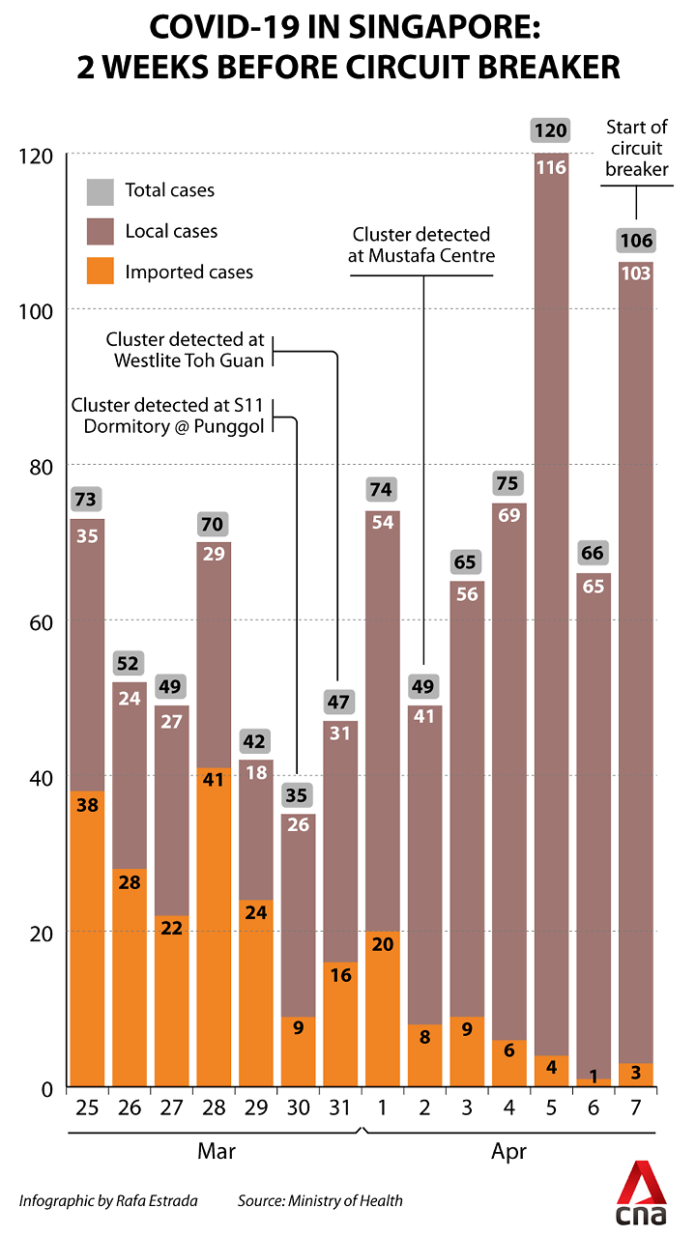SINGAPORE: In January when a then little-known disease made its way to Singapore, people were still going about their daily routines – working, studying, eating, playing – routines that would be completely turned on their head just months later.
Today, home offices are the norm, wearing a mask out is obligatory and virtual meet-ups have replaced social gatherings.
As the threat of COVID-19 grew, so did restrictions imposed by authorities.
First, a multi-ministry task force, set up to handle the outbreak, blocked the entry and exit of visitors who had travelled to Hubei for 14 days prior. This also applied to those holding passports issued in Hubei, the Chinese province where the coronavirus first emerged.
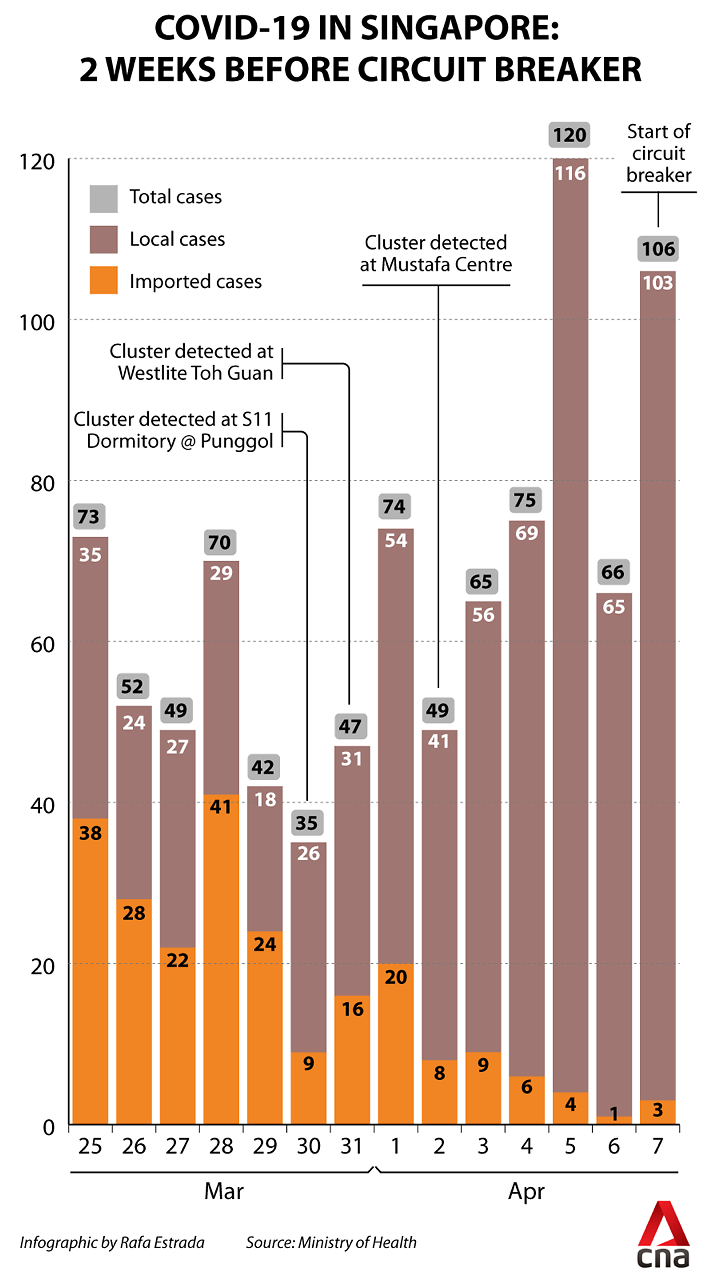
Meanwhile in Singapore, as hand sanitiser and face masks flew off the shelves, the Government was forced to police retailers who sought to profiteer from the growing unease.
Not long after, travel restrictions were expanded to include new visitors of all nationalities who had recently travelled to mainland China. At the time, cases in Singapore were all still imported.
But in February, Singapore witnessed its first local transmissions and the Disease Outbreak Response System Condition, or DORSCON, level was raised to Orange, just one tier shy of the top category.
Cue panic buying, as supermarkets were stripped bare of toilet paper and instant noodles.
As local transmissions grew and clusters began to form, Singapore reported its first COVID-19 death in March. Shortly after, restrictions were tightened further – all short-term visitors were banned from entering or even transiting through Singapore.
Gatherings were also limited to 10 people and schools started introducing home-based learning.
And before long, the introduction of a “circuit breaker”, and with it, a slew of enhanced safety measures.
APR 3: CIRCUIT BREAKER ANNOUNCED
Prime Minister Lee Hsien Loong announced the beginning of a circuit breaker that was to last from Apr 7 to May 4. Most workplaces were to be closed, except for those providing essential services, and schools moved to full home-based learning.
There was also a shift in the Government’s mask policy, with people no longer discouraged from wearing masks. Reusable masks would also be distributed to all households.
READ: COVID-19 circuit breaker extended until Jun 1 as Singapore aims to bring down community cases ‘decisively’: PM Lee
READ: Most workplaces to close for one month from Apr 7 to curb spread of COVID-19
APR 7: CIRCUIT BREAKER BEGINS
A new Bill prohibiting social gatherings both in private and public spaces was passed in Parliament. At around the same time, Singapore reported a record daily high of new cases – 120 in total, all of them, bar four, were locally transmitted.
Of these, a “significant number” were linked to two clusters in foreign worker dormitories, bringing the total number of dorm clusters to five, a figure that would quickly balloon.
A shuttered McDonald’s outlet is seen at VivoCity shopping mall on May 6, 2020. (Photo: Low Zoey)
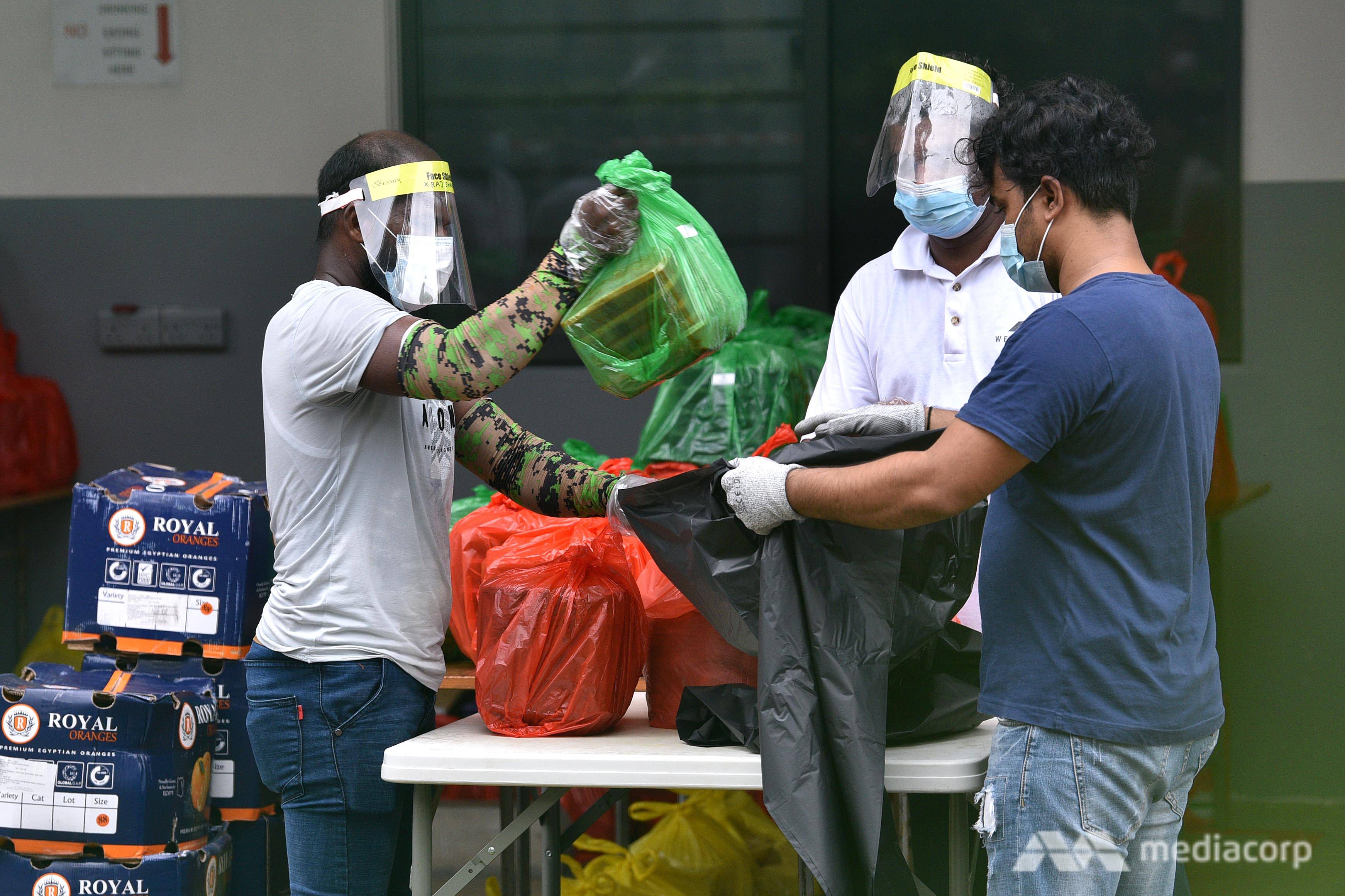
A foreign worker at Westlite Mandai Dormitory collecting meals on Wednesday (May 6). Westlite Mandai Dormitory has been gazetted as an isolation area to curb the spread of COVID-19 (Photo: Jeremy Long)
Dining-in at eateries also was also not allowed, although take-away and deliveries could continue. Marriage solemnisations also had to be postponed.
READ: Singapore sees record daily spike of 120 COVID-19 cases, ‘significant number’ linked to worker dormitories
READ: COVID-19: Social gatherings of any size in both private and public spaces prohibited under new Bill
READ: ‘Right time’ to close schools now, says Education Minister Ong Ye Kung
APR 10: AUTHORITIES CLOSE STADIUMS
Sports stadiums, which had stayed open since the start of the circuit breaker, were closed over fears of people congregating. Care arrangements also took a hit, as the Government made it clear that children were not to be dropped off at their grandparents’ homes.
APR 10: FIRST DAY WITH NO IMPORTED CASES
Travel restrictions were taking effect and on Apr 7, Singapore reported, for the first time, no imported cases.
Meanwhile, the number of community cases and dormitory cases, which were classified separately, continued to grow.
READ: Singapore reports 198 new COVID-19 cases; second death from Lee Ah Mooi Old Age Home cluster
APR 14: WEARING OF MASKS MADE COMPULSORY
A week after the commencement of the circuit breaker, the Government announced that anyone stepping out of the house would have to wear a mask, or face being fined, with egregious cases to be be dealt with by the courts.
READ: COVID-19: Compulsory to wear mask when leaving the house, says Lawrence Wong
READ: COVID-19: Parents not allowed to drop children off daily at grandparents’ place, open-air stadiums to close
APR 20: NEW DAILY HIGH
As the situation in dormitories worsened, numbers shot up, reaching a high of 1,426 new cases on Apr 20, the majority of these coming from worker dormitories.
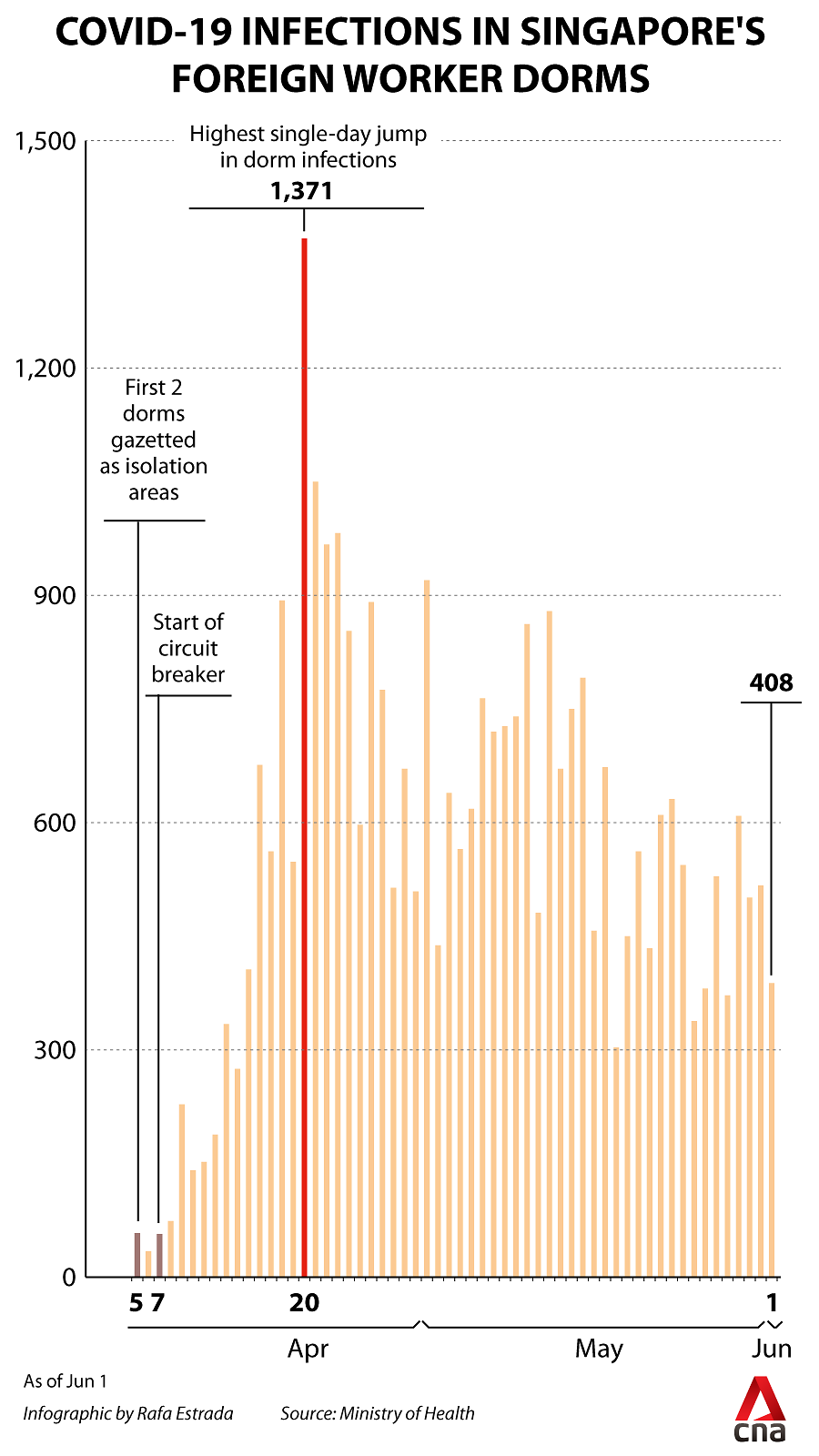
Medical teams comprising doctors and nurses from hospitals and polyclinics began setting up at these dorms, as testing was ramped up.
A cubicle at a community care facility for COVID-19 patients at The Singapore EXPO & MAX Atria. (Photo: MOH)
At the same time, more spaces were also made available for patients at community isolation facilities at the Singapore Expo and MAX Atria. The first such facility was at D’Resort. Such facilities are meant to accommodate patients with mild symptoms and those who have largely recovered.
READ: 1,426 new COVID-19 cases in Singapore, mostly foreign workers in dormitories
READ: COVID-19: Community isolation facility at Singapore Expo operational from Apr 10
APR 21: CIRCUIT BREAKER EXTENDED TILL JUN 1, TIGHTENED
The circuit breaker that was to end on May 4 was extended by almost a month, and restrictions further tightened. The number of essential businesses allowed to operate was trimmed again, with entry restrictions imposed at some wet markets and supermarkets.
A man wearing a face mask makes a purchase at a fish stall in Geylang Serai wet market in Singapore on Apr 23, 2020. (Photo: AFP/Roslan rahman)
Standalone outlets selling only beverages, packaged snacks, confectioneries or desserts had to close their retail shops. Online sales were allowed but only if the food items were sold from a licensed central kitchen, manufacturing facility or warehouse. However, sites that made items such as cakes, ice cream and chocolate were banned from operating.
Hairdressing and barber shops were also closed. And home-based businesses were not allowed to operate.
For students, the mid-year school holidays would come early, as they were brought forward from June to May.
READ: COVID-19 circuit breaker extended until Jun 1 as Singapore aims to bring down community cases ‘decisively’ – PM Lee
READ: Hairdressers, confectioneries, standalone beverage outlets to close as essential services list trimmed
READ: June school holidays brought forward, GCE Mother Tongue exams rescheduled
READ: Visits to 4 popular markets to be restricted based on patrons’ IC numbers – NEA
READ: From bubble tea runs to getting a haircut: What you can or cannot do under tighter COVID-19 circuit breaker rules
MAY 5: SOME CIRCUIT BREAKER RESTRICTIONS LIFTED
Almost a month into the circuit breaker, authorities announced the easing of certain restrictions.
Among the first businesses to benefit were traditional Chinese medicine (TCM) providers, with practitioners allowed to administer acupuncture treatments for pain management.
The opening of home-based food businesses, selected food retail outlets and food manufacturing firms would follow a week later.
Hairdressers and barber shops would also be allowed to provide basic services.
People queue outside a hairdressing salon on May 12, following the easing of some circuit breaker measures. (Photo: Gaya Chandramohan)
MAY 14: SMALLEST DAILY NUMBER OF COMMUNITY CASES
There was some good news on May 14, with just two new community cases reported, the lowest since the start of the circuit breaker.The daily number of discharged patients also crossed the 1,000 mark for the first time.
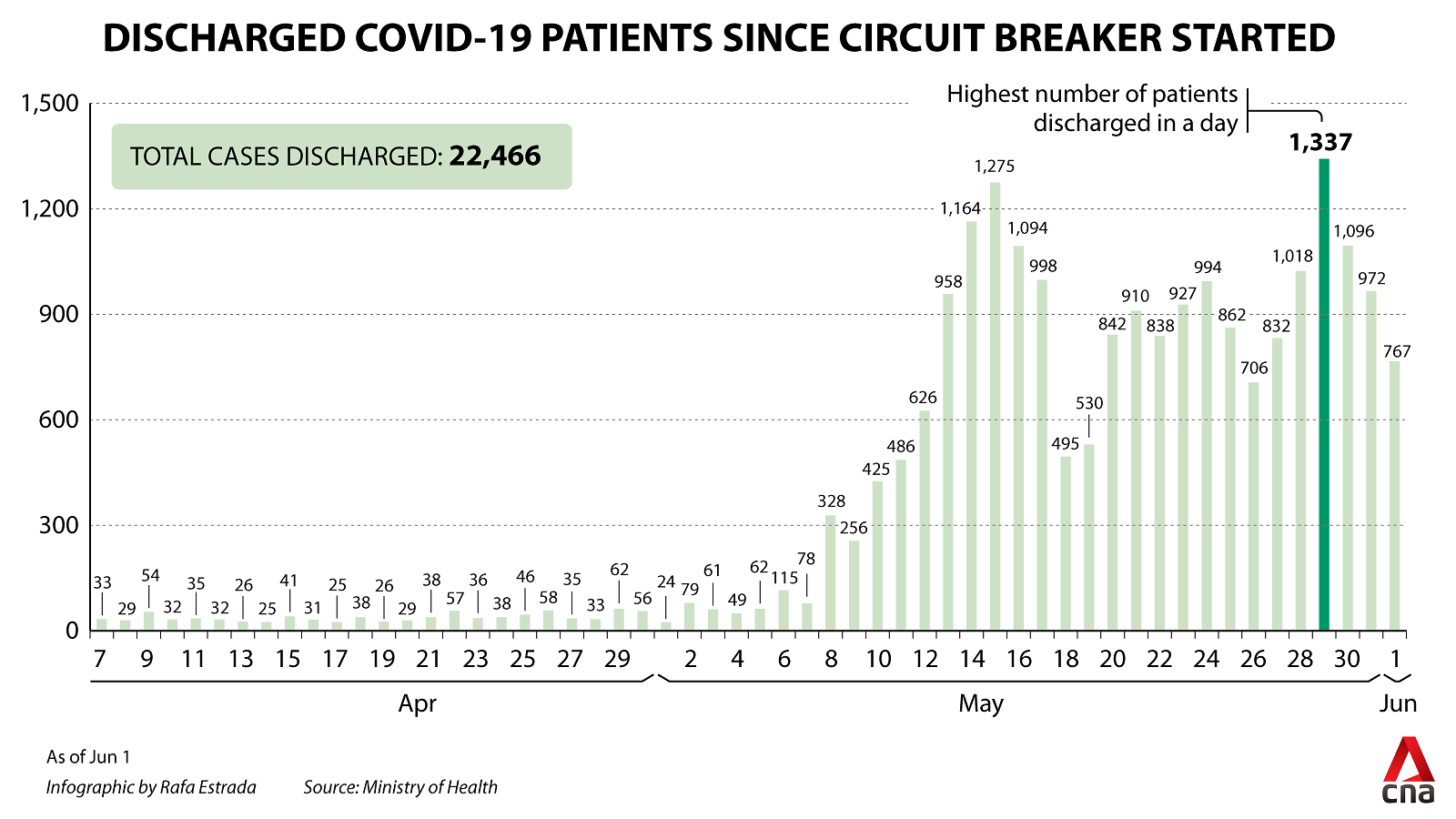
READ: Singapore to start gradual easing of circuit breaker measures as COVID-19 community cases decline
READ: 328 COVID-19 patients discharged in Singapore, highest number in a single day
READ: Singapore reports smallest daily number of community cases since start of circuit breaker
READ: Some students to be allowed to go back to school from May 19 under easing of circuit breaker
READ: Marriage certificates sent by courier and no tea ceremonies: First group of couples get married virtually during circuit breaker
MAY 19: ANNOUNCEMENT ON EXITING CIRCUIT BREAKER, REOPENING IN THREE PHASES
Singapore announced that it would exit the circuit breaker on Jun 1, with measures to be progressively lifted in three phases from the next day. In Phase 1, businesses that operate in settings with lower transmission risks would be allowed to open.
About a week later, no new clusters were reported for first time in more than six weeks.
READ: Singapore to exit circuit breaker on Jun 1, visiting of parents, places of worship allowed with restrictions
READ: No new COVID-19 cluster reported in Singapore for the first time in more than 6 weeks
JUN 1: CIRCUIT BREAKER ENDS
Phase 1: Businesses allowed to resume operations from Jun 2 include manufacturing firms. Hairdressers and barbers will also be allowed to offer all services, beyond just basic haircuts.
The lifting of the circuit breaker also means the resumption of motor vehicle servicing, aircon servicing, printing services, basic pet services, and the reopening of school bookshops and retail shops selling school uniforms.
Visits to parents or grandparents will also be allowed, with visits limited to two persons who must come from the same household.
In-person marriage solemnisations will be permitted, with up to 10 persons in attendance.
Places of worship can also reopen for private worship. This will be limited to a maximum of five members from the same household praying together at any one time.
Pre-schools will gradually reopen from Jun 2. In Phase 1, students from graduating cohorts in the primary and secondary levels will be allowed to return to school on weekdays, while other cohorts will rotate weekly, alternating between home-based learning and returning to school for lessons.
People will still need to wear masks, and go out only when necessary. Phase 1 will last 28 days at the minimum.
Phase 2: Phase 2 will involve the gradual reopening of more firms and services with safe management measures in place.
These include food and beverage dine-in and retail outlets, gyms and fitness studios, and tuition and enrichment centres. Sports, recreation and outdoor facilities will also start to reopen, subject to safe management practices for both facility staff and users being in place.
The authorities said that reaching the next phase could take multiple steps. It may involve three or six months, depending on how the situation evolves, they said. They also cautioned that the number of cases in the community may rise.
Phase 3: By this third phase, social, cultural, religious and business gatherings or events would have resumed, although gathering sizes would still have to be limited in order to prevent large clusters from arising.
Seniors, who are more likely to develop severe complications from the coronavirus, would have been able to resume day-to-day activities while practising safe distancing measures.
READ: Transition to a ‘new normal’ after circuit breaker: How will measures be lifted beyond Phase 1?
READ: Singapore to gradually reopen borders, plans to resume essential travel among countries with low COVID-19 transmission rate
BOOKMARK THIS: Our comprehensive coverage of the coronavirus outbreak and its developments
Download our app or subscribe to our Telegram channel for the latest updates on the coronavirus outbreak: https://cna.asia/telegram
